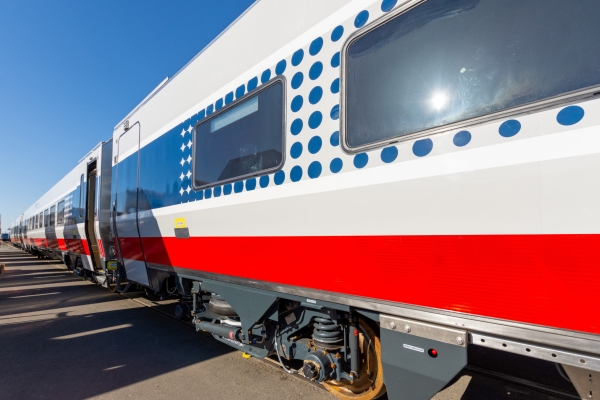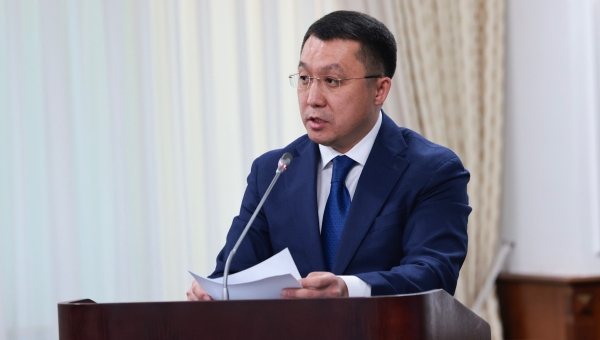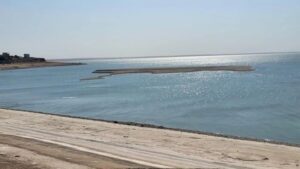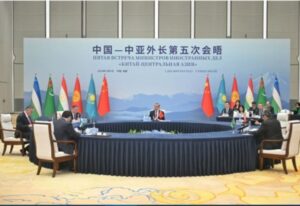The Ministry of Transport of Kazakhstan has outlined plans for the country’s railway sector, including the purchase of 1,200 new passenger cars by 2029. This initiative aims to modernize Kazakhstan’s aging rolling stock, enhance passenger services, and support the broader goals of improving the country’s transit potential.

Minister of Transport Marat Karabayev presented the updates at a recent government meeting, detailing ongoing efforts to develop Kazakhstan’s railway industry. Key initiatives include the expansion of transcontinental transit routes, modernization of infrastructure, and the renewal of the fleet. The government’s plan aims to address the increasing demand for passenger and freight transportation, while reducing the wear and tear on the existing fleet.
Karabayev highlighted the progress made in enhancing Kazakhstan’s role as a key transit hub connecting China with Europe and Central Asia. The country now operates five major international railway corridors, with container transit volume growing nearly five-fold over the past decade. This growth is part of a broader increase in cargo transportation, which saw a 3.5% rise to 263.4mn tons over the first 10 months of the year.
Kazakhstan is also focused on boosting the capacity of critical corridors, such as the North-South corridor, which links the country to Iran, Turkmenistan, and Russia. The importance of this route has grown with shifting global logistics, and efforts are underway to increase its capacity from 10mn tons per year to 20mn tons. A roadmap for synchronous development along this corridor was signed earlier this year, along with tariff discounts to attract more cargo traffic.
In July of this year, Kazakhstan signed a Roadmap to develop the North-South corridor in collaboration with Iran, Turkmenistan, and Russia. To boost cargo flow, Kazakhstan introduced a 50% tariff discount for transit transportation. Efforts are also underway to establish a Single Logistics Operator for the eastern “North-South” route, similar to the UTLC.
The minister also discussed the current state of the country’s rolling stock, which includes 1,800 locomotives and 139,000 freight cars. With a high wear rate of 61%, Kazakhstan is taking steps to replenish and modernize its fleet. The plan includes the purchase of 185 locomotives this year, 187 next year, and 257 in the following three years, addressing the rolling stock deficit.

In addition to freight vehicles, there is a particular focus on passenger cars. In the past year, 118 new cars were purchased, and 143 more are expected this year. By 2029, Kazakhstan plans to procure a total of 1,200 passenger cars, which will help increase the fleet to over 3,000 units and reduce the wear and tear of passenger cars to 38%. To facilitate this, the Ministry is considering the creation of a unified leasing company, allowing domestic manufacturers to provide passenger cars for lease with the option to purchase.
Kazakhstan is also addressing the need to upgrade railway infrastructure to accommodate growing demand. Plans include the repair of 11,000 km of railway lines by 2029, with 2,800 km already repaired. Additionally, around 5,000 km of new and second tracks will be built, automatic blocking systems will be introduced on 2,600 km of tracks, and 184 stations will be modernized.
Key border stations like Dostyk, Altynkol, and Saryagash, which handle traffic to and from China and Central Asia, are also being upgraded. With plans to increase the capacity of Dostyk and Altynkol by 2 times, the overall goal is to expand Kazakhstan’s transit capacity and reduce bottlenecks.
Karabayev reported a steady increase in passenger transportation, with 17.6mn passengers transported in the first 10 months of 2024, a 6% increase from the previous year. The ministry aims to transport 21mn passengers by the end of the year. To support this growth, modernization of the country’s railway stations is ongoing, with major repairs at stations in Kyzylorda, Shymkent, Pavlodar, and Turkestan.
Looking ahead, the government’s initiatives are expected to drive substantial growth in Kazakhstan’s railway sector. By 2029, Kazakhstan aims to increase rail exports to 130mn tons and transit volumes to 45mn tons. Road transport is also expected to double, while transit traffic could grow six-fold.




